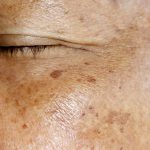Are Our Phones and Computer Screens Causing Premature Aging?
 Much of our lives are spent in front of devices like smartphones, TVs, tablets, and laptops. All of these sources of entertainment are also sources of blue light. Compared with the well-understood dangers of ultraviolet light (which is proven to cause skin aging and cancer), there is still much to learn about the long-term effects of blue light on the skin.
Read on to learn about the risks of blue light damage and the role smart devices could be playing in premature aging.
Much of our lives are spent in front of devices like smartphones, TVs, tablets, and laptops. All of these sources of entertainment are also sources of blue light. Compared with the well-understood dangers of ultraviolet light (which is proven to cause skin aging and cancer), there is still much to learn about the long-term effects of blue light on the skin.
Read on to learn about the risks of blue light damage and the role smart devices could be playing in premature aging.
What Is Blue Light?
Blue light, also referred to as High Energy Visible or HEV light, poses potential skin harm in the form of free radicals. Blue light has been proven to induce oxidative stress in the skin, contributing to skin aging. Like exposure to UVA/UVB light, HEV can cause inflammation, dryness, wrinkles, hyperpigmentation, age/sun spots, and sagging skin. However, UVA and UVB exposure affects the top layer of our skin in the form of sunburn or skin cancer. At the same time, blue light penetrates deeper into the dermis, making it incredibly damaging. According to the American Academy of Ophthalmology, the primary source of blue light we’re exposed to is the sun. However, we also get a significant dose from our screens and indoor lighting.How Blue Light Is Damaging To Your Skin
As previously mentioned, ultraviolet light has been proven to damage DNA cells directly. Blue light damages skin differently – it destroys collagen through oxidative stress. Your skin contains a chemical called flavin, which quickly absorbs blue light. During the absorption process, the reaction that takes place produces unstable oxygen molecules, or free radicals, that damage the skin. When it comes to HEV emitted by smartphones and other tech devices, research is still underway. Conclusive data has yet to be seen as to whether your screen time is to blame for fine lines and wrinkles. That said, studies have suggested that even short-term exposure to blue light from electronic devices can “increase the generation of reactive oxygen species,” as skin is a primary target of oxidative stress.Other Ways Smartphones Cause Skin Problems
Facial Acne
Whenever you make a phone call on a smartphone, a wide swath of your face rests against your phone. If you spend a healthy amount of time on the phone each day, your skin is exposed to oil, dirt, and bacteria. This creates irritation that can result in acne or enlarged clogged pores.To avoid:
Clean your phone regularly with antibacterial wipes. Take advantage of your speakerphone whenever possible. Try a headset if you’re frequently on calls (which can also help improve your posture.)Crow’s Feet
Even with new smartphone models swelling in size, phone screens are still small. This leads to many of us squinting to read text on our phones, forming wrinkles around the eyes like crow’s feet.To avoid:
Increase the font size in your settings to take advantage of bigger text. If you have wrinkles that you’re hoping to improve, Botox and Dysport are ideal for areas around the eyes and the forehead. Venus Viva treatments will also improve a wide range of wrinkles and other skin concerns to give you an overall refresh.Bunny Lines
These thin lines run up the sides of the nose. They extend toward the inner corners of your eyes and can cause subtle premature aging. Like crow’s feet, bunny lines can also be caused by squinting down at your phone screen.To avoid:
Follow the crow’s feet tip, as the same squint-related muscles are responsible. Botox can also help with bunny lines!Protecting Your Skin From Digital Devices
There is still much to learn about the long-term effects of blue light on the skin and whether or not our digital devices are to blame for premature aging. But an abundance of evidence supports blue light’s contribution to photo-aging, including wrinkles, skin laxity, and hyperpigmentation. Specific products claim to block the high-energy wavelengths radiating from the sun and your digital screens. However, there is little-to-no difference between these formulas and other antioxidant serums. The best thing you can do to help protect your skin from damaging conditions is to use protective skin care. Incorporating a sunscreen with iron oxide and antioxidants in the ingredient list will help keep your skin protected from blue light rays and other damaging environmental factors. To help find the best products to protect your skin, contact Vein & Laser Institute to schedule a consultation.Recent Posts



